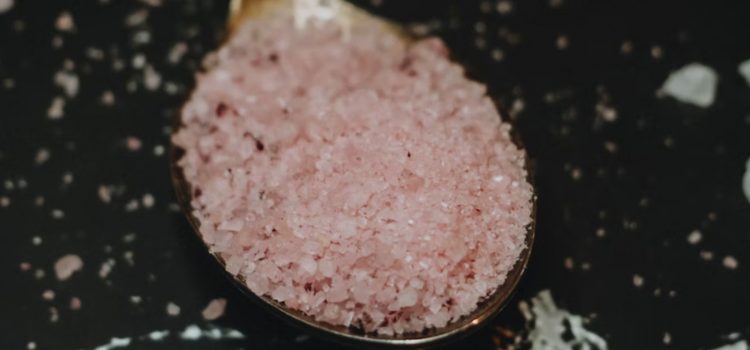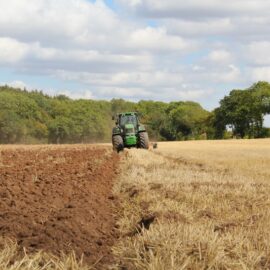

This article is an excerpt from the Shortform book guide to "Salt" by Mark Kurlansky. Shortform has the world's best summaries and analyses of books you should be reading.
Like this article? Sign up for a free trial here.
What are the two uses of salt when it comes to food? What’s the cultural significance of salt?
In Salt, Mark Kurlansky argues that salt has played an important role in shaping cuisines around the world. Salt both preserves food when production is low and is a seasoning that makes food more flavorful.
Let’s explore these uses of salt.
Use 1: Preserving Food
The first of two uses of salt is to preserve food. According to Kurlansky, for most of history, salting was the primary method of preserving food. Only recently in modern history have we reduced our dependency on salt preservation, due to innovations such as refrigeration, freezing, and canning.
Here, we’ll explore two main methods of preserving food with salt prior to these innovations: curing and pickling.
Preservation Method 1: Salt Curing
First, Kurlansky explains that when you salt-cure food, you surround it with salt and give the salt time to penetrate the food. Salt prevents food from spoiling in two ways: 1) it kills bacteria, and 2) it dehydrates the food, preventing more bacteria from growing. Bacteria thrive in moist environments, such as the flesh of animals and fish.
According to Kurlansky, people throughout history have depended on salt-cured meat and fish. The ancient Egyptians were likely the first to cure fish in salt. This helped them survive when the Nile flooded less than usual and failed to irrigate enough crops. In medieval Europe, salt-cured fish—especially salted cod—prevented famine and sustained armies. More specifically, the Basques, whose medieval empire stretched across modern-day Spain, discovered that cod is ideal for salt-curing: It cures rapidly because it’s low in fat.
Preservation Method 2: Pickling
Whereas throughout history, meat, cheese, and fish were mostly salt-cured, vegetables and fruits were mostly pickled. Kurlansky explains that when you pickle food, you allow it to age and ferment in the absence of oxygen (typically in a jar). Fermentation is when the sugars in food break down, producing lactic acid—a natural preservative. Salt plays a crucial role in this process: When you add salt flakes or brine (salty water) to the pickling jar, it prevents yeast from forming. Yeast produces alcohol, not pickled food.
According to Kurlansky, throughout history, people have enjoyed and depended on pickled vegetables and fruits. The ancient Chinese were the first to pickle food, specifically soybeans and other vegetables. In ancient Rome, the working class consumed many olives, which are pickled in brine. Throughout medieval Europe, people ate sauerkraut (pickled cabbage). It provided them with nourishment throughout long and harsh winters. It was also a staple on European ships because its high vitamin C content prevents scurvy, a painful disease (caused by vitamin C deficiency) that involves bleeding gums and fatigue.
Use 2: Seasoning Food
Next, Kurlansky claims that people throughout history have used salt to season their dishes, especially to balance or highlight other flavors (such as spiciness, bitterness, and sweetness). For instance, since medieval times, Swedes have believed that salt brings out sugar’s sweetness. They use both salt and sugar to season foods such as fish and licorice.
Let’s explore two main ingredients that have been used throughout history to season food: salty sauce and salt crystals.
Ingredient 1: Salty Sauce
According to Kurlansky, for millennia, people have enhanced dishes using salty sauces. Salt-curing and pickling often produced these sauces as a byproduct. For instance, during ancient times, the Romans and the Vietnamese produced salty sauces (garum and nước mắm, respectively) by straining the liquid left over from pickling fish.
Ingredient 2: Salt Crystals
Kurlansky claims that in ancient times, people rarely seasoned their food with table salt (the white crystals found in salt shakers). They didn’t need to: Salt-preserved food and sauces provided enough saltiness. When modern innovations in food preservation replaced salt-based preservation, more people began seasoning dishes with salt crystals. This eventually led to the popularization of uniform-sized, white salt crystals that people stored in tabletop salt shakers.

———End of Preview———
Like what you just read? Read the rest of the world's best book summary and analysis of Mark Kurlansky's "Salt" at Shortform.
Here's what you'll find in our full Salt summary:
- The role salt played in driving innovation, building empires, and provoking rebellions
- Why salting food isn’t just about improving its flavor
- How salt played an important role in several independence movements






